- Xcite App: Transforming the Electronics Shopping Game in Kuwait
- Key Features of an App like Xcite
- Intuitive User Interface
- Extensive Product Range
- Secure and Flexible Payment Options
- Smart Delivery and Pickup
- Push Notifications & Alerts
- Instant Sharing Feature
- AI Chatbot Customer Support
- How to Build an Ecommerce App like Xcite?
- Research & Planning: The Foundation of Success
- UI/UX Design: Crafting an Immersive Shopping Experience
- App Development: Bringing Your Vision to Life
- Testing & Quality Assurance: Ensuring Perfection
- Launch & Deployment: Rolling Out Your Masterpiece
- Cost to Build an Ecommerce App Like Xcite
- Factors Affecting the Cost to Develop an App like Xcite
- App Complexity
- No. of platforms
- Development Team Location Costs
- Third-Party API Integrations
- Post-Launch Maintenance
- Xcite App Revenue Model: Key Strategies for Success
- Commission on Sales
- In-App Advertising
- Affiliate Marketing
- Data Monetization
- Subscription-Based Services
- Challenges & Their Solutions in Developing An App Like Xcite?
- Challenge 1: Scalability Issues
- Challenge 2: Payment Gateway Integration
- Challenge 3: UX & Design Overload
- Challenge 4: Performance Optimization
- Challenge 5: Security Concerns
- Appinventiv’s Ecommerce App Development Services: An Ideal Way to Develop An App Like Xcite
- FAQs
What’s the secret sauce to gauge the success of your user-friendly and feature-packed app? It’s the buzz your customers or users create among their friends, colleagues, relatives, and friends. And if they recommend your app to others, that’s the cherry on top—cue the steady cash flow!
This is not a sugarcoated statement; it’s just facts: consumers are more than willing to refer brands they like to their friends and family. However, this can increase profits by 25%.
E-commerce giants like Xcite have mastered this magic and are crushing it with their popular electronic app in the Middle East, especially Kuwait. Along with quality, the brand has been able to lock down all the business-critical features and maintain its ops seamlessly through its Xcite App. Subsequently, their user base keeps expanding, turning their app into a serious cash machine.
If you’re also eyeing that same success for your biz and want to develop an app like Xcite, you’ve landed on the right blog. Here, you’ll explore everything that makes Xcite a real money-making platform and how to snag a similar app to generate steady dollars.
Xcite App: Transforming the Electronics Shopping Game in Kuwait
If we talk about Kuwait’s online mobile shopping apps, Xcite is a name to be reckoned with among the top eCommerce apps. Xcite is a leading multi-brand electronics retailer in Kuwait. It offers a user-friendly and intuitive e-commerce app with access to over 300 global brands. This Kuwait-based MNC runs and manages its operations through its multilingual Xcite app, which enables users from 40 countries to snag their favorite electronics without hassle.
Key Features of an App like Xcite
Ever wonder what all it takes to build an ecommerce app like Xcite? Besides their solid electronics lineup, Xcite’s audiences are also blown away by the key features of an app like Xcite that cater to the needs of today’s fast-paced shoppers. Here’s a breakdown of the key app features that make it a hit:
- Intuitive User Interface
- Extensive Product Range
- Secure and Flexible Payment Options
- Smart Delivery and Pickup
- Push Notifications & Alerts
- Instant Sharing Feature
- AI Chatbot Customer Support
Intuitive User Interface
Xcite is renowned for its sleek, intuitive, and easy-to-navigate app interface, ensuring a hassle-free shopping experience. This makes product hunting, screening reviews, and handling transactions a breeze for new customers.
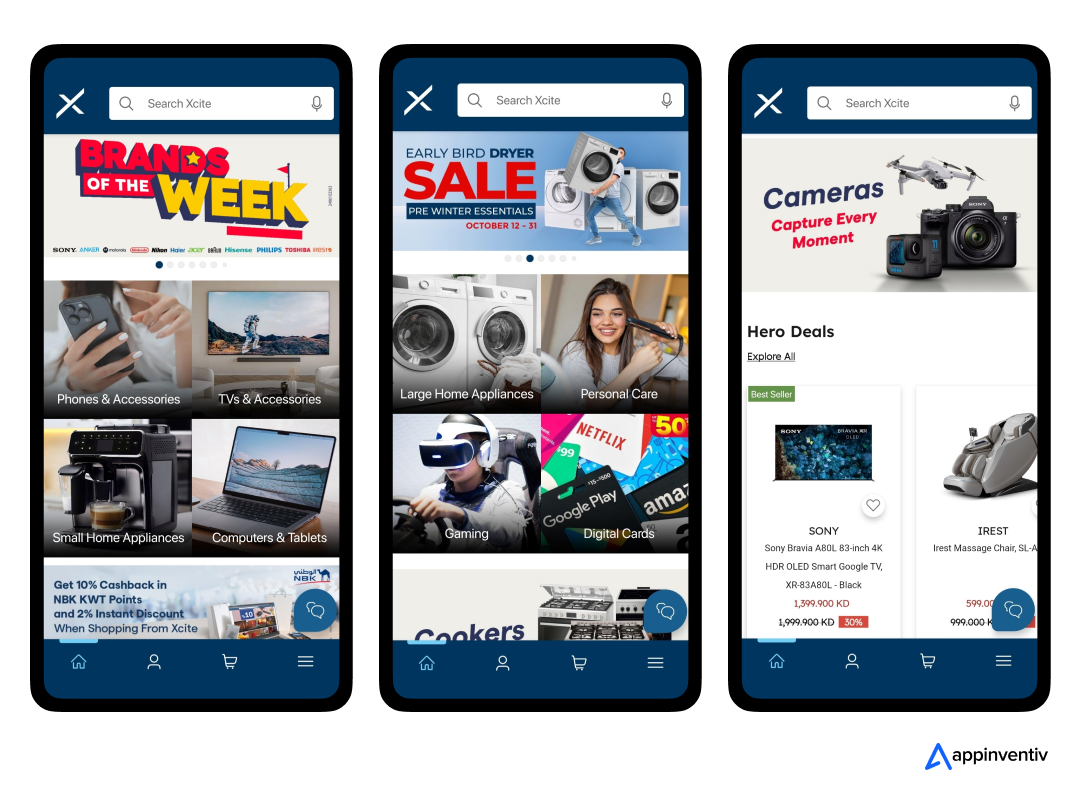
Extensive Product Range
The Xcite app pools over 10,000 products from 300+ top-notch brands in mobiles, electronics, home and kitchen appliances, TVs, air conditioning, laptops, iTunes digital cards, and other categories. The best part is that users can get all these utilities under one roof, which saves them time from toggling between multiple platforms.
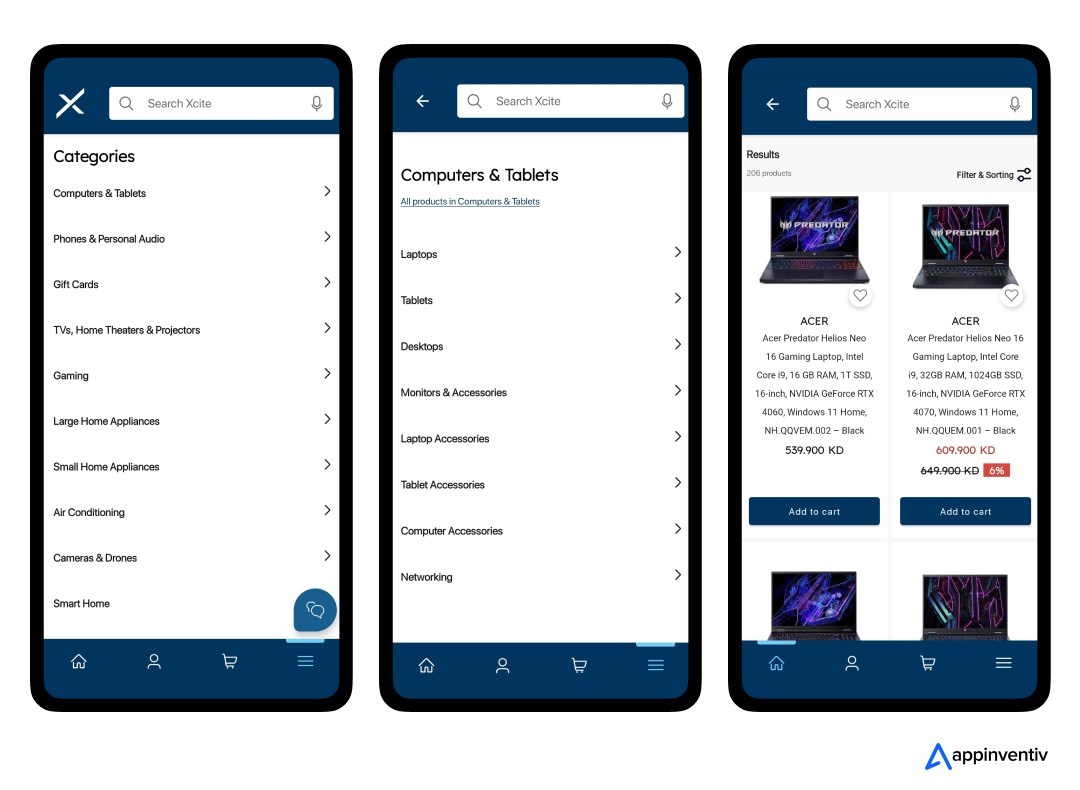
Secure and Flexible Payment Options
Every ecommerce journey ends with payment. But if that payment option is not seamless, it may frustrate your customers, and they abandon the cart. In a survey conducted in 2024:
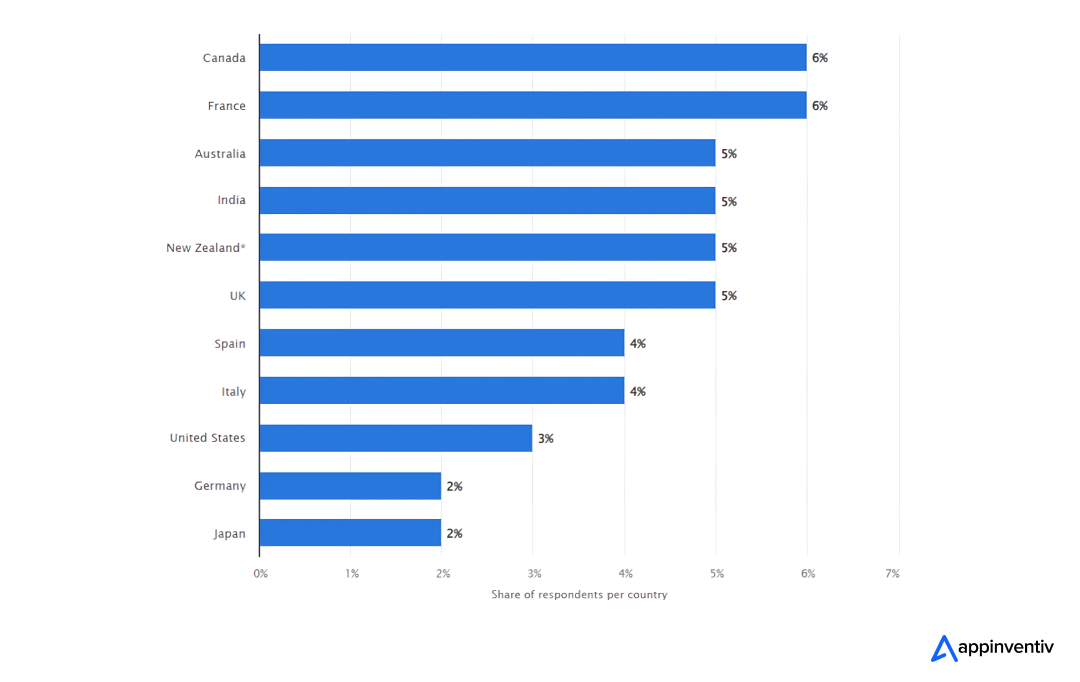
17% of global shoppers have abandoned their carts because their preferred payment method was unavailable during checkout. Thanks to apps like Xcite, users can conveniently choose secure payment options. Xcite supports various payment methods, including KNET, credit cards, and installment plans.
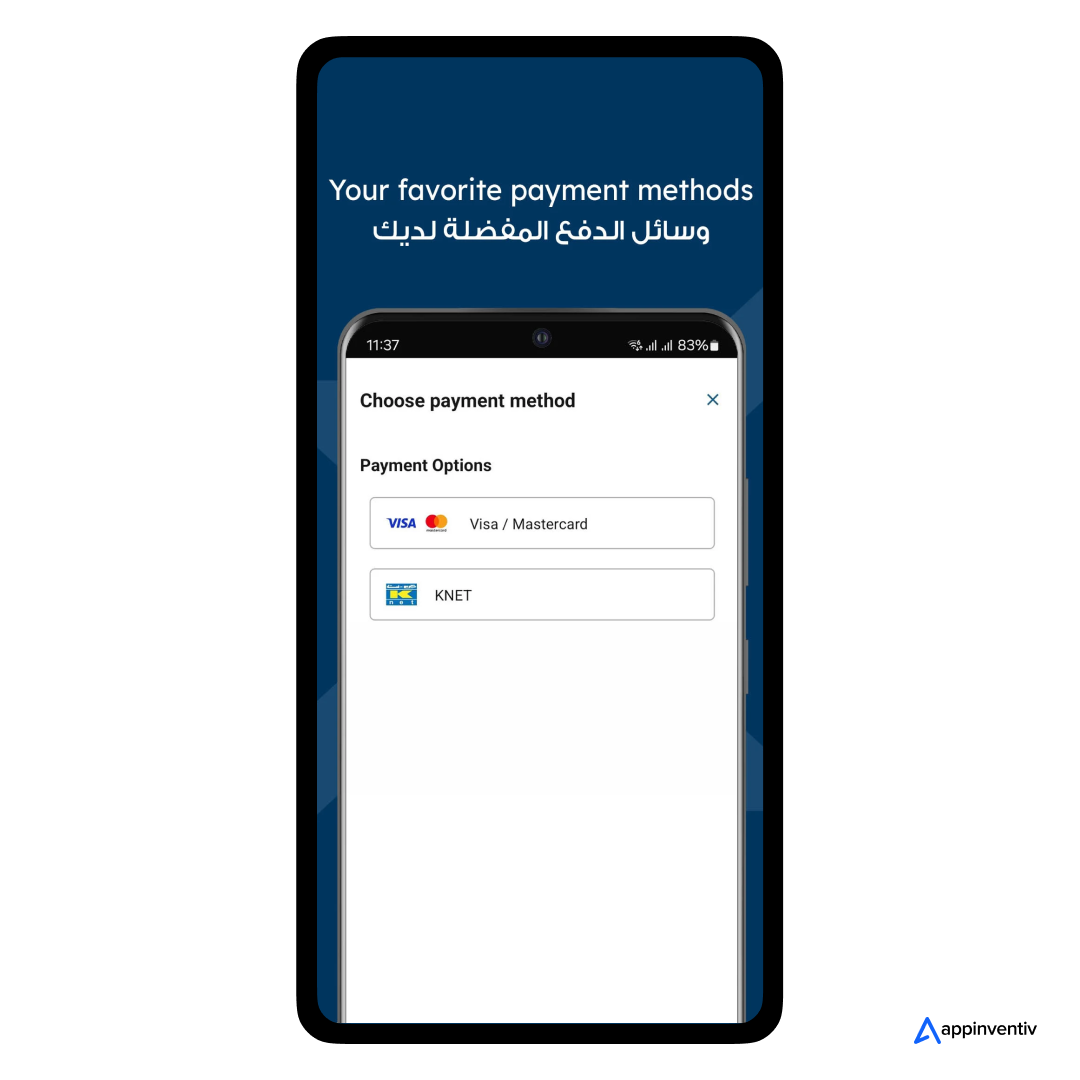
Smart Delivery and Pickup
Control over how customers want to receive their purchase is another applaudable feature that ensures flexible delivery options. This enables Xcite app users to choose from home delivery to in-store pickup. The app provides real-time GPS tracking to make it more convenient, enabling customers to check their delivery status. Thus, this transparency and flexibility in the delivery process keep shoppers returning for more!
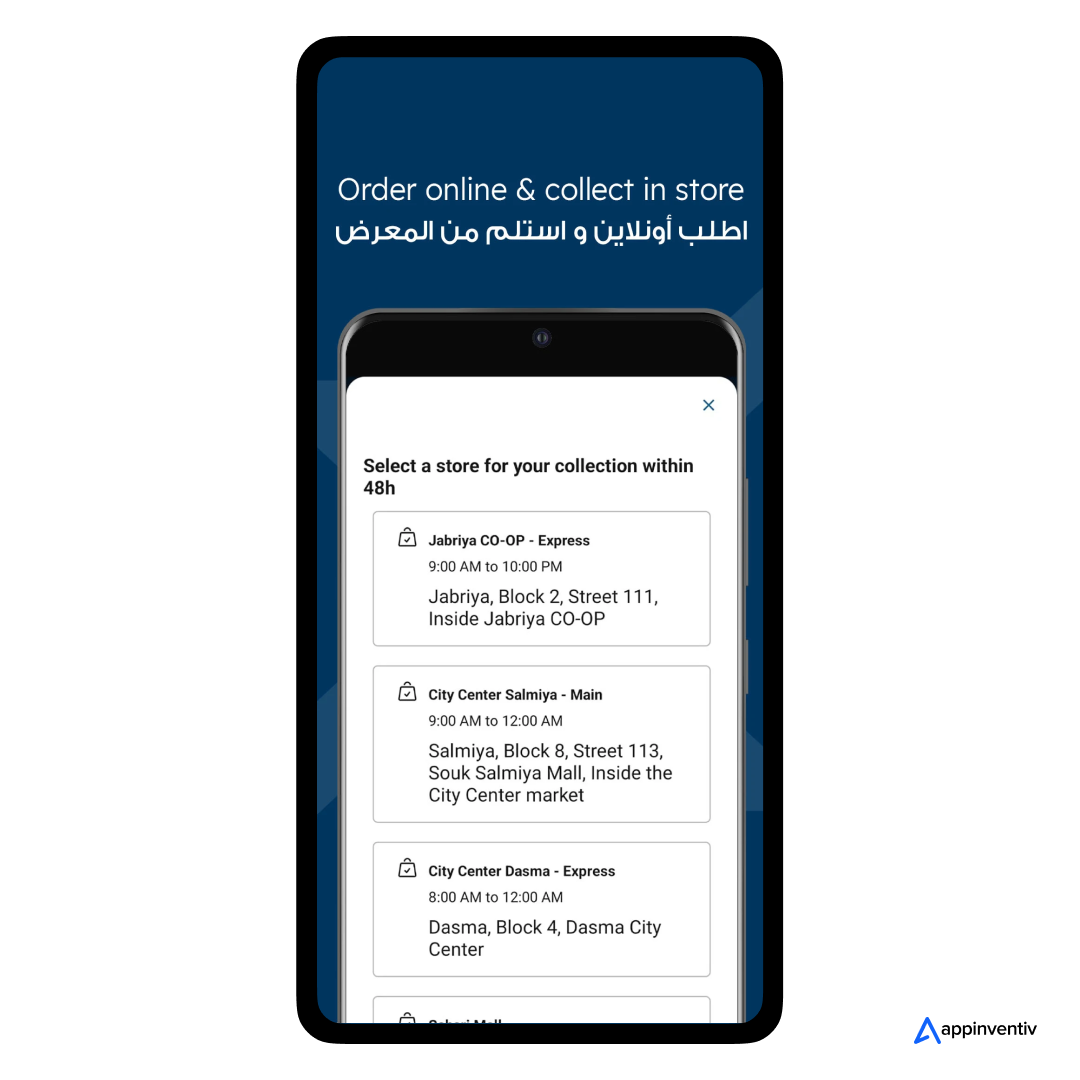
Push Notifications & Alerts
More than an electronic app, Xcite has become a go-to on-demand platform that conveniently hooks shoppers with their favorite brands. What’s the secret sauce? Push Notifications and real-time Alerts! It lets brands send instant notifications and alerts about deals, discounts, and order status to customers. This personalized experience can be a game-changer in engaging your shoppers.
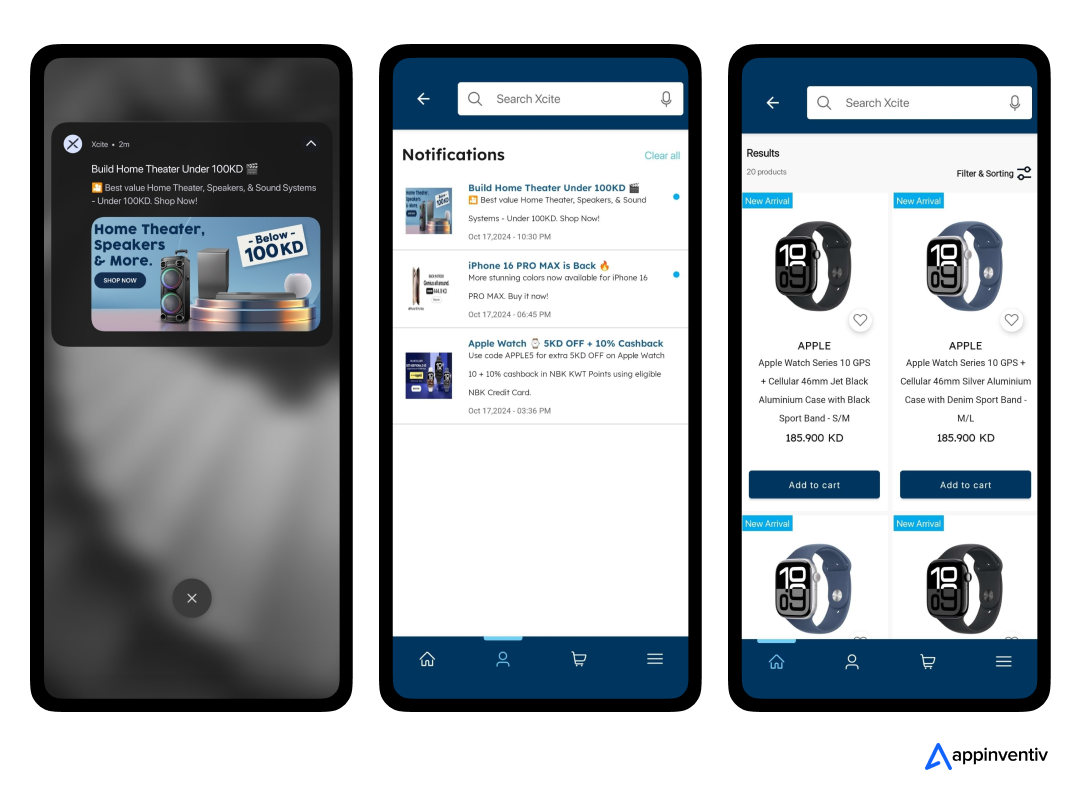
Instant Sharing Feature
With the Xcite app’s instant sharing feature, customers can easily share their favorite products with their friends and family and recommend that they buy them. These recommendations have turned into sales opportunities and have helped Xcite take its sales to a new level. Thus, this feature helped the business expand its brand along with the latest business opportunities.
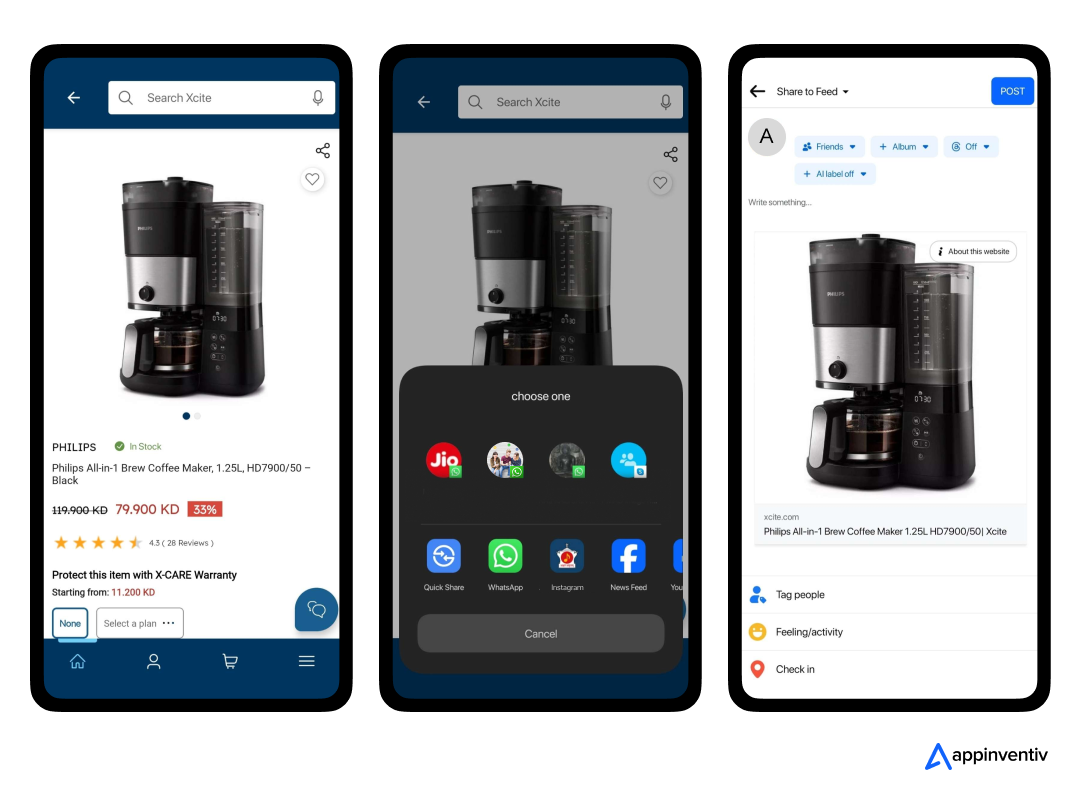
AI Chatbot Customer Support
According to HubSpot, 93% of customers will likely make repeat purchases with companies that deliver superior customer service. Thus, Xcite supports its app with an AI Chatbot to provide augmented customer service. This empowers their customer support team to ensure 24/7 support and timely resolution of customer queries.
How to Build an Ecommerce App like Xcite?
Why is Xcite on the list of Kuwaiti online mobile shopping apps? It’s got everything going for it—slick UI, seamless navigation, and a rock-solid backend that keeps it all running smoothly.
The journey of a successful app always starts with its development phase. The Xcite app development process isn’t just ticking off a few boxes. An online shopping app development like Xcite demands solid planning with smart and flawless execution that helps drive conversions to the store. Many stages are involved in making an app like Xcite, and every stage holds its importance, either making or breaking your app’s success.

Here’s a detailed rundown of each step you require to develop an app like Xcite.
Research & Planning: The Foundation of Success
UI/UX Design: Crafting an Immersive Shopping Experience
App Development: Bringing Your Vision to Life
Testing & Quality Assurance: Ensuring Perfection
Launch & Deployment: Rolling Out Your Masterpiece
Research & Planning: The Foundation of Success
Even Rome was not built overnight. Masterpieces require proper research, actionable strategies, and visionary planning. The same goes for mobile app development—it’s not just slapping code together. You gotta prepare the groundwork with lots of research and strategies, enabling you to make boss-level moves while eliminating risks and stacking up opportunities. This makes your business win big!
Let’s explore how the right approach to research & planning can help develop an app like Xcite.
Deep Market Research
Wanna know what kind of ecommerce app your audience is really vibing with? Learning from the big leader’s playbook —like Xcite and other niche players—can help you plan your game. Dig deep with some competitive analysis and scope out those enticing features and functionalities that keep their customers coming back for more.
This rigorous competitive analysis hands you that fine edge that sets your masterpiece apart from your competitors. With this edge, you can tap into actionable insights like purchase behavior, consumer preferences, pain points, and potential market plays. This will spot the goldmine of features to incorporate into your app, making it functionally-grade.
Identify Target Audience
Ultimately, your audience will use your app and come to your store. Thus, it’s critical to target the right audience, who may have different preferences regarding usability and functionality. For example, if your business targets tech-savvy GenZs, you need an app that ensures lightning-fast checkout. And if your audience values ease and simplicity, you need an intuitive UI-powered app.
Thus, every element of your app—from design to features to functionalities—will differ according to the distinct needs of your target audience.
Competitor Benchmarking
If you wanna move ahead of your competitors, learning from them is not sufficient. You need to set a benchmark against industry standards. How? Keep checking on a few things like:
- What is the average loading time for top eCommerce apps?
- How can you improve their checkout process?
- What loyalty programs are they offering, and can yours be more enticing?
Beyond just learning from competitors, your app must be benchmarked against industry standards. What is the average loading time for top eCommerce apps?
Roadmapping the Development Process
The Xcite app development process has different stages. Thus, developing a comprehensive roadmap for the app helps you break the development tasks into smaller, manageable sprints. This roadmap clearly defines each sprint’s timelines, goals, and KPIs to stakeholders, including developers, designers, testers, and project managers.
Tech Stack Selection
The tech stack you deploy—whether reactive or native—determines the app’s scalability, performance, and functionalities. Always gotta pick the stack that keeps your app running smoothly and strong for the long run.
UI/UX Design: Crafting an Immersive Shopping Experience
Your app’s UI/UX design decides whether the audience will stick around the app or bounce back within seconds. Your audience is smart now. Besides a good-looking app, they expect an intuitive and immersive experience that keeps them engaged and provides value for their time on your app. A great design, including visuals, navigation, and quick checkout flows, is the foundation of every successful ecommerce app.
Wireframing & Sketching
Wireframing and sketching are not only about sketching apps; they are a process where UX is embedded step-by-step to make the app clutter-free and engaging. When it comes to wireframing and sketching, it is advisable to start with low-fidelity wireframes to map out every page and screen in the app—home page, product page, checkout screens, post-purchase transaction, thanks message, order management interface, and many more.
Prototyping for User Flow
In Prototyping, buttons, images, or text blocks are not merely design components that beautify your app. They are the key drivers that bring customers to your app and encourage them to complete a purchase. Always start with creating high-fidelity prototypes that enable you to interact with your app’s interface.
A/B Testing & Feedback Loops
Once your prototypes are ready, go for A/B testing. Once the real users navigate through your app, provide them with a feedback form to collect valuable insights like:
- Are they able to find products easily?
- Are they able to make hassle-free payments?
- Are they abandoning carts? If yes, why?
This constant iterating based on feedback helps you to optimize UI/UX for conversion.
App Development: Bringing Your Vision to Life
Turning a brilliant app idea into life is a game-changer. Developing an app is beyond coding; it’s about turning vision into something transformative and tangible that interacts with users and exceeds their expectations.
Frontend Development
Magical Visualization is a part of front-end development that involves building an intuitive interface. UI/UX designers work closely with front-end developers to create a responsive and fluid screen that looks perfect on any device, whether a 4-inch smartphone or a 10-inch tablet. The front end must be loaded in milliseconds; users should never feel lag while browsing products or menus.
Backend Development
This is like engineering the app’s core functionality to power your ecommerce app for the long-run haul. Setting this up requires establishing the server, databases, and APIs to handle everything from user authentication to product catalogs, payment processing, and order management. When developing an ecommerce shopping app, ensure your backend development is strong and scalable enough to handle huge volumes of visitors, mainly at peak times such as Black Friday or holiday shopping sales.
API Integration
To connect your ecommerce app with external services like shipping, payments, or customer support, you’re gonna need to plug in APIs from payment gateways like PayPal or Stripe. Each integration should be rigorously tested to ensure its smooth operations.
Database Architecture
Securing personal and transactional customer data is crucial in the app development process and thus requires proper attention. Every user profile, inventory, order, and payment record needs to be stored safely and readily retrievable. The database must also be safe with encryption and optimized for quick access for lightning-fast load times.
Testing & Quality Assurance: Ensuring Perfection
Testing and Quality Assurance are safety nets that quickly identify bugs and issues that affect the app’s performance. This mobile app testing helps you quickly address issues and fix all bugs, ensuring a flawless app runs smoothly.
Functional Testing
This testing model ensures that all the features of an app are working seamlessly—search of a product, addition to cart, checkout process, and receiving push notifications. All such functionalities must be tested on multiple devices and operating systems to maintain consistency.
Performance Testing
With its thorough approach, performance testing assures you that your ecommerce application does not crash and can handle thousands of concurrent users, especially during sale events. Performance testing includes Load tests, stress tests, and server speed optimization that prevent your application from causing lags or freezes.
Security Testing
E-commerce apps deal with sensitive data like payment information, personal addresses, and order details. A crucial phase is security testing to ensure no vulnerabilities. This phase involves penetration testing, SSL certificate implementation, and ensuring PCI-DSS compliance for secure payments.
Launch & Deployment: Rolling Out Your Masterpiece
This is the stage in which you’ll roll out your creation in front of an audience. Hitting the “go live” button is not easy. You’ll need to ensure everything is appropriately placed for its smooth debut.
App Store Optimization (ASO)
It is done strategically to make the app visible to its many competitors. This involves optimizing your app’s title, description, screenshots, and App Store and Google Play Store reviews. Relevant keywords and offering promotional deals will increase the ranking. Positive reviews collected will also boost the rank of your application.
Pre-Launch Marketing
Pre-launch marketing creates excitement with teasers, countdowns, and early access offers. Engage your potential user base on social media, offer them exclusive discounts, and get influencers to showcase your application.
Beta Testing
Before deploying the application to a large user base, it must be taken through a beta stage where a small group of users can access it. This will establish any last-minute bugs and ensure the general performance is good in actual usage conditions.
Cost to Build an Ecommerce App Like Xcite
The cost to develop an eCommerce app like Xcite can range from $35,000 to $250,000, depending on the features and functionalities you want to include.
Here’s a comprehensive breakdown of the estimated cost to build an e-commerce shopping app like Xcite, covering each key development phase.
| Development Stage | Cost Range (in USD) | Functionalities | |
|---|---|---|---|
| Lower | Higher | ||
| UI/UX Design | $5,000 | $40,000 |
|
| Frontend Development | $10,000 | $80,000 |
|
| Backend Development | $10,000 | $80,000 |
|
| QA & Testing | $5,000 | $30,000 |
|
| Third-Party Integrations | $5,000 | $20,000 |
|
| Total | $35000 | $250,000 | |
Total Estimated Cost Breakdown
| Complexity Level | Total Cost (in USD) |
|---|---|
| Basic Ecommerce App | $35,000 – $80,000 |
| Mid-Range eCommerce App | $80,000 – $150,000 |
| High-End eCommerce App | $150,000 – $250,000+ |
Factors Affecting the Cost to Develop an App like Xcite
Everything counts regarding the final price tag: the functionalities to include, the degree of customization, the details of the technology stack, and even the location of your development team. So, let’s break it down to what you should consider before starting your e-commerce app development project.
App Complexity
The more features an app has, the costlier it tends to be. Advanced features like personalization, augmented and virtual reality, or real-time data syncing require much more time and resources.
No. of platforms
Simultaneous development for the three platforms, iOS, Android, and web, will increase the cost.
Development Team Location Costs
The costs vary depending on the development team’s geographic location, such as Kuwait, UAE Regions, Qatar, etc.
Also Read: How Much Does It Cost to Build an eCommerce App Like Jarir Bookstore
Third-Party API Integrations
Payment gateway integration, shipping API, and other third-party integrations cost upfront, along with ongoing costs.
Post-Launch Maintenance
The costs of maintaining the app, fixing bugs, updating features, and scaling the infrastructure will continue to rise as the user base grows.
Xcite App Revenue Model: Key Strategies for Success
Apps like Xcite acquire relevant market share mostly due to the smooth shopping experience they can create for buyers. However, if you develop an app like Xcite, you can easily bring in money-making opportunities. Knowing the Xcite app revenue model is important for any business wanting to create a similar app and reap profit.
Let’s examine the strategies and business model of the Xcite app that made it a financial success and how you can mirror these tactics in your application.
Commission on Sales
The key source of income for an app like Xcite will be the commission. Xcite will take a fraction of the amount sold whenever a transaction occurs. This will pay well for third-party sellers’ e-commerce applications.
For your app:
- Work with third-party sellers: Let many different retailers and brands list their products and take a commission on each sale.
- Scale through variety: The more sellers you onboard, the more varieties of products you offer, increasing your probability of getting more sales.
In-App Advertising
Ads can be pure gold for you if done effectively. eCommerce app rides on the traffic generated on its portal by selling advertisement space to companies that want to advertise their products. Whether it is a banner ad, sponsored product ad, or promotion banner, the brands pay money to get advertisements on apps like Xcite.
For your app:
- Pertinent ads: Make sure the ads served in your app are relevant to user preferences. The higher the engagement and ad revenue, the more targeted the ads.
- Prime ad inventory: They can offer the brands their high-value spots or home page banners at premium prices.
Affiliate Marketing
Affiliates is another marketing strategy Xcite has utilized. In this strategy, the company collaborates with influencers, bloggers, and websites to assist in marketing products. Affiliates get a percentage of profits from sales through their referral links, hence a win-win situation for both parties concerned.
For your app:
- Activate the influencer: After you have selected the most suitable influencers and bloggers, you must contact them to promote your products. Track sales through a combination of referral codes and links.
- Increase your affiliate network: The more affiliates you have, the more exposure your application will get, thus increasing traffic and sales.
Data Monetization
Data monetization is the least-discussed yet most lucrative revenue model. An e-commerce platform gathers tons of data, from customer preferences to shopping habits. An app like Xcite would likely use the same data to improve the user experience, but it could sell aggregated data to market research firms or advertisers.
For your app:
Aggregate Data Insights: Analyzing Customer Behavior to Create Valuable Insights for Retailers and Brands.
Respect for privacy: Anonymize and comply with data privacy directives while selling any data produced by the users to earn their trust.
Subscription-Based Services
The other potentially good source of revenue for Xcite is subscription models in the form of loyalty programs or premium memberships. Subscribers are often treated to exclusive deals, early sales, and faster delivery options, with an added feeling of being exclusive and likely to repurchase.
For your app:
- Tiered membership levels: It offers various membership packages with unique benefits, including free shipping, early sale access, and member-only discounts.
- Loyalty rewards: Establish a point program where purchases are rewarded with points that can be redeemed to acquire discounts or special offers. You can dedicate a Customer Loyalty App to this.
Challenges & Their Solutions in Developing An App Like Xcite?
Develop an ecommerce app like Xcite is challenging in itself. Developers and entrepreneurs should consider everything—from integrating high-end features to creating a smooth experience for the user. Let’s dig into some common roadblocks and, of course, solutions to crush them.
Challenge 1: Scalability Issues
Problem: Your app continues to grow, as do your user base, product listings, and overall data traffic. An Xcite-like app must accommodate hundreds of millions without breaking a sweat. Of course, without scalable planning in place, things get messy quickly: slow loads, crashes, or, heaven forbid, server meltdowns.
Solution: You should design your application to be scalable from day one. Cloud-based services like AWS or Google Cloud can grow the infrastructure as needed. You should also use a microservices architecture so that parts of your application, such as your payment process or product search, can scale independently.
Challenge 2: Payment Gateway Integration
Problem: Payment realization is a challenge. Users want smooth, secure, and flexible payment processing. Once an order fails during checkout on-site, the user may abandon the cart-pain! And let’s not forget the regional payment methods and variations that need to be accounted for.
Solution: Integrating multiple payment gateways is a solution for this. Depending on your target markets, you should accommodate credit cards, digital wallets, and local options like bank transfers. Use trusted payment providers like APIs from Stripe, PayPal, or Razorpay. Prioritize security, encryption, and compliance with PCI DSS standards.
Challenge 3: UX & Design Overload
Problem: Product-rich apps like Xcite present thousands of items for sale and can easily clutter the UX. Customers will bail much faster than you can say “app uninstall” if they have to hunt for what they want or face a glitchy interface.
Solution: Keep the design as simple as possible, and simplicity can be the core. Remember to have an intuitive navigation flow along with smart product categories and filters. Apply A/B testing to determine which aspects are popular with users, then adjust the design accordingly.
Challenge 4: Performance Optimization
Problem: Many simultaneous users browse and buy, and your app needs to be lightning-fast regardless of the load. Your brand reputation will suffer if your app slows down or freezes during critical moments like Black Friday sales.
Solution: Implement performance optimization techniques, such as caching, lazy loading, and optimizing images and media files for faster load times. Using CDNs (Content Delivery Networks) helps deliver content to users much more efficiently, scattered across different geographies. Performance needs to be continuously monitored with the help of tools like Google Lighthouse or GTMetrix.
Challenge 5: Security Concerns
Problem: E-commerce apps are most vulnerable to cyberattacks because they involve high transaction volumes and sensitive user information. A data breach will cost you money and customer trust.
Solution: Invest in the app’s security because strong encryption is to be seen in data, two-factor authentication is to be used in accounts, and no breach of security standards like GDPR or CCPA will be allowed. Regularly conduct security audits and address the vulnerabilities as soon as possible.
Also Read: Top 10 Cybersecurity Measures for Businesses in 2025
Appinventiv’s Ecommerce App Development Services: An Ideal Way to Develop An App Like Xcite
When developing a great app like Xcite, one would look forward to a firm with detailed insight into the trading trade. This is where Appinventiv Middle East stands tall as a leading mobile app development company in Kuwait. We have been around long enough to understand what it takes to make an app hot.
Our ecommerce app development services in Dubai range from developing a product from scratch to fully re-engineering existing platforms, covering all aspects of development in between. It starts with intuitive UI/UX designs to smooth payment integrations and robust backend systems that cover all the technicalities involved.
We’ve added many feathers to our cap when delivering exceptional ecommerce apps across the Middle East, including Kuwait. Some noticeable success stories include industry giants like IKEA, Adidas, Edamama, and 6 Street.
Now, a spot on this success list is waiting for you. Partner with us today and turn your app’s ideas into life that leaves the best in the market jaded.
FAQs
Q. What are the key features of an eCommerce app like Xcite?
A. An eCommerce app like Xcite possesses features like ease of interface, a wide variety of products, secure and flexible payment options, smart delivery and pickup, push notifications, instant sharing, and even AI chatbots for customer service.
Q. What technologies are typically used to build an e-commerce app like Xcite?
A. Common technologies include React Native or Flutter for mobile, Node.js or Python for the backend, and cloud platforms like AWS.
Q. Why Build an eCommerce App Like Xcite?
A. An online store won’t work if you desire that super level of conversions. If you want to be a hitter in the e-commerce game, you need a powerhouse e-commerce app that blows your customers’ minds and keeps them returning for more. The benefits of an ecommerce app like Xcite include cross-selling, upselling, and all the other lucrative deals and money-making avenues.
Q. What are the ongoing maintenance and update requirements for an app like Xcite?
A. Ongoing maintenance and update requirements for an e-commerce app like Xcite include regular software updates, bug fixes, security patches, performance monitoring, and feature enhancements based on user feedback.
Q. How can I keep my ecommerce app updated and relevant?
A. To keep your e-commerce app updated and relevant, regularly release new features and improvements based on user feedback and market trends. Additionally, periodic updates for security and performance enhancements are conducted to ensure a seamless user experience.


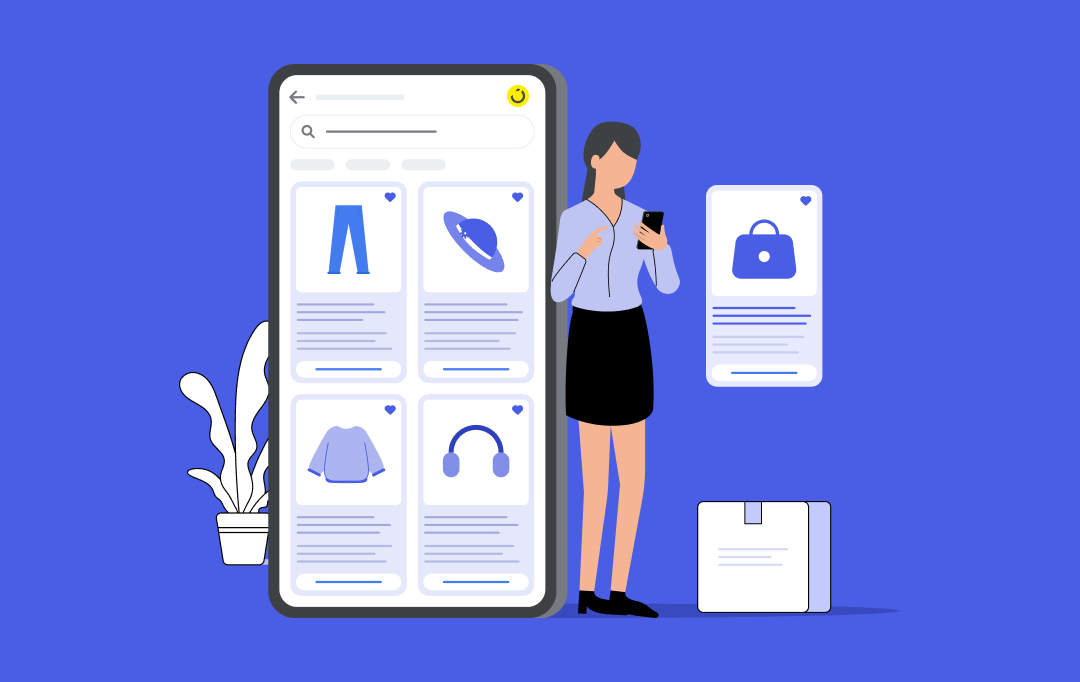
How Much Does It Cost to Build an E-commerce App Like Noon?
Key takeaways: Noon’s success highlights the rising demand for mobile-first eCommerce in the UAE. Building a similar app can cost anywhere between $ 30,000 and $200,000+, depending on the scope. The blog covers all key user and admin features needed to build a Noon-like app. Identify key cost drivers, including feature complexity, scalability, platform, and…

How to Build a Quick Commerce App? Features, Process, Costs
Key Takeaways Quick commerce is a rapidly growing market driven by consumer demand for ultra-fast delivery and seamless convenience, projected to reach 900 million users by 2029. Quick commerce app development costs vary widely based on features and scale, ranging from $40,000 for an MVP to $400,000+ for a fully featured app. Core features, such…

Top 20 Lucrative eCommerce Business Ideas to Start in 2025
Ryan Barr, the owner of WP Standard, wakes up each morning to the sounds of online sales notifications. From the humble beginnings of crafting leather guitar cases, his morning routine now celebrates the thriving expansion of WP Standard into a seven-figure e-commerce empire. Let’s look back to the beginning Ryan started WP Standard with just…


















